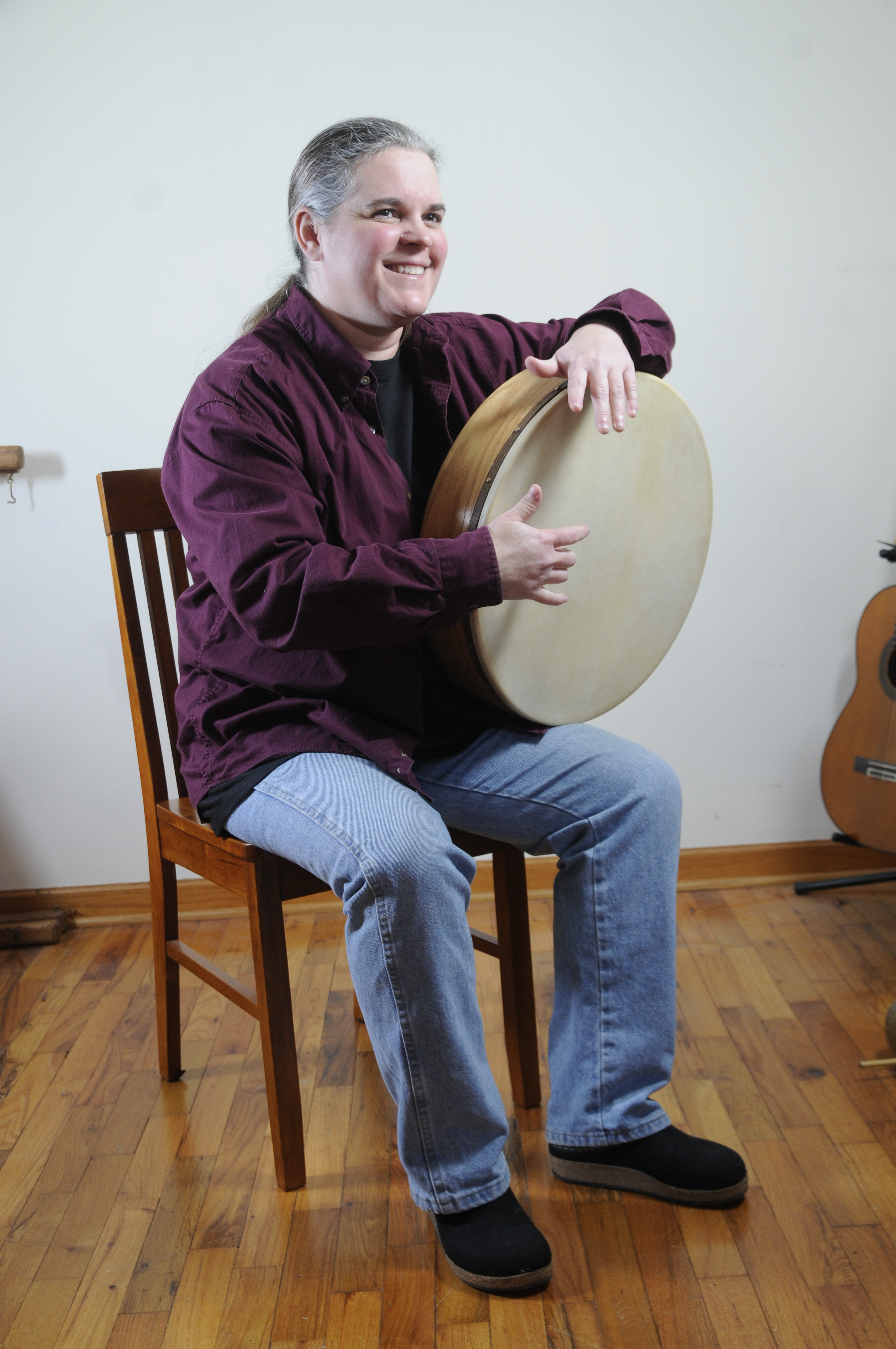Second course: KU class meets in online fantasy site

Students taking a Kansas University course in digital animation and game creation meet in the virtual world of Second Life. Stacey Fox, assistant professor of art, has created her avatar, an orange fox named Sage Duncan.

A Kansas University class in digital animation and game creation is meeting in the virtual medium Second Life. Online visitors interact at Art Island.

The class auditorium in Second Life.

Stacey Fox, assistant professor of art, has helped create the art department’s Art Island, shown above.

Stacey Fox, KU assistant professor of art, is responsible for the blended media lecture hall taken in Second Life.
Imagine a classroom where the professor is an orange fox named Sage Duncan.
She plays the conga drum, executes tai chi dance moves and hovers around like Peter Pan.
It seems pure fantasy. But this semester, Kansas University is making it real by pulling the lecture hall from the building and tucking it into the virtual world of Second Life.
The KU art department now is offering its first blended media course, which flips back and forth from the real world to the virtual one by using Second Life as a place to meet and display art.
Stacey Fox, assistant professor of art, is responsible for the program. Fox — known as Sage in Second Life — is leading the KU art department’s convergent media initiative, which focuses on getting KU up to speed with other colleges by advancing course content with technology. She teaches portions of her digital animation and game creation class on Second Life, and other instructors are beginning to take advantage of the site, as well.
Digital natives
The initiative is part of a plan to prepare for students about to hit KU’s campus — students who have wielded cell phones, iPods and video games since childhood.
“The wave of digital natives about to wash across the KU campus see virtual worlds and convergent media as the daily norm,” Fox says. “(Using Second Life as a classroom) is not new. KU is actually way behind.”
Colleges across the nation are experiencing a paradigm shift: More and more schools are advancing education by offering classes inside virtual worlds, such as Second Life.
But a common misconception is that Second Life — built and launched by Linden Labs in 2003 — is a game. It’s far from that, Fox says. It’s actually a computerized extension of reality, a world created by its users — some 1.3 million people who live out second lives in Second Life.
A great many of those users, called residents in the world, are students and professors. And one reason Second Life appeals to academics is its price. To develop classrooms inside Second Life, schools must buy an island, which costs $1,400 for a full year. Universities can then use the island to cut down on commuting costs and to reach out to students overseas, increasing campus enrollment.
“Compare all that to the cost of running just one physical building on the KU campus in Lawrence, and the cost savings are enormous,” Fox says.
How it works
Instead of bricks and boards, cement and nails, classrooms in Second Life are composed of pixels. And students and professors use avatars, virtual representations of users that come in both human and animal form, to interact.
The interactive nature of Second Life helps defeat the argument that online courses are stripped of intellectual discourse and human contact.
With Second Life, classes come close to replicating real-time courses — students and professors can talk to each other using avatars, microphones and instant messages.
Using these tools, people can use Second Life to host talk shows, perform ballet or play instruments in front of live, international audiences.
For students like KU senior Sandra Ristovska, Second Life is a place to display artwork to international audiences.
“The first thing that attracted me to this virtual world is the opportunity to use the program as another venue for promoting and exhibiting my own artwork,” Ristovska says. “The first day in the virtual world my avatar spoke in several languages with people from Mexico, the United States and several European countries.”
Instead of climbing in the car and shuttling across town, Ristovska sometimes uses the virtual world as a place to meet people just a few miles away. And Fox doesn’t clomp to campus to meet her students, either. Instead, she cracks open a laptop or reaches for her iPhone and meets them in her 3-D office.
“I don’t have a physical office at KU,” she says. “(My office is) a virtual one on the KU Art Island. Again, it’s cost-effective, and the students can just log in from wherever they are and reach me quicker than going to a physical office on campus.”
New perspective
Fox and Ristovska also designed an island for the Spencer Art Museum, which hopes to use the virtual world to display its art. Jessica Johnson, who is in charge of Spencer’s drive toward enhancing exhibits via the Web, says Second Life appeals to people in a way a traditional museum doesn’t.
“Second Life helps us do two different things,” she says. “For the people who are used to the museum and support us, Second Life provides a new perspective. … For those not interested in the museum, it lets them be involved in a way that might be more appealing.”
While Second Life is definitely making an impact, it’s uncertain how much of an effect it will end up having. Fox imagines a world with not just virtual classrooms but virtual campuses comprised of students and teachers scattered across the globe.
“The days of the ‘Little-House-on-the-Prairie’ classroom are ending,” Fox says. “This is a very exciting time for education.”




